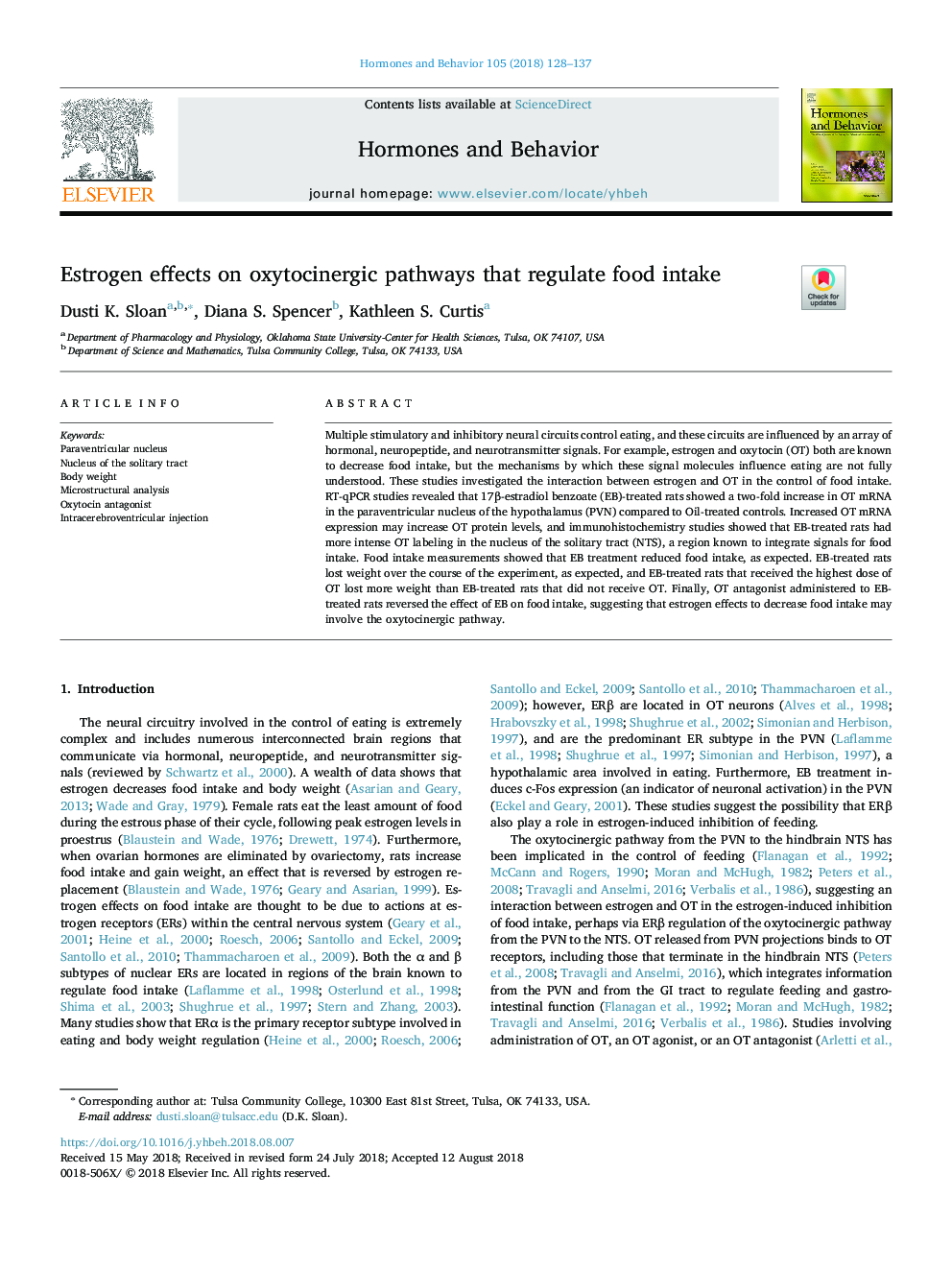| Article ID | Journal | Published Year | Pages | File Type |
|---|---|---|---|---|
| 11001434 | Hormones and Behavior | 2018 | 10 Pages |
Abstract
Multiple stimulatory and inhibitory neural circuits control eating, and these circuits are influenced by an array of hormonal, neuropeptide, and neurotransmitter signals. For example, estrogen and oxytocin (OT) both are known to decrease food intake, but the mechanisms by which these signal molecules influence eating are not fully understood. These studies investigated the interaction between estrogen and OT in the control of food intake. RT-qPCR studies revealed that 17β-estradiol benzoate (EB)-treated rats showed a two-fold increase in OT mRNA in the paraventricular nucleus of the hypothalamus (PVN) compared to Oil-treated controls. Increased OT mRNA expression may increase OT protein levels, and immunohistochemistry studies showed that EB-treated rats had more intense OT labeling in the nucleus of the solitary tract (NTS), a region known to integrate signals for food intake. Food intake measurements showed that EB treatment reduced food intake, as expected. EB-treated rats lost weight over the course of the experiment, as expected, and EB-treated rats that received the highest dose of OT lost more weight than EB-treated rats that did not receive OT. Finally, OT antagonist administered to EB-treated rats reversed the effect of EB on food intake, suggesting that estrogen effects to decrease food intake may involve the oxytocinergic pathway.
Keywords
Related Topics
Life Sciences
Biochemistry, Genetics and Molecular Biology
Endocrinology
Authors
Dusti K. Sloan, Diana S. Spencer, Kathleen S. Curtis,
